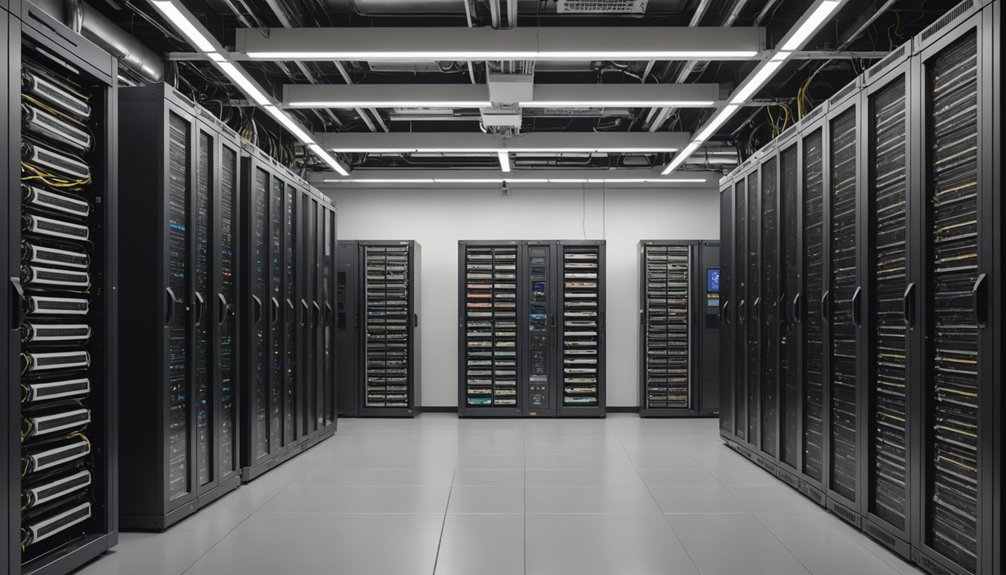SQL and NoSQL databases differ fundamentally in structure and scalability. SQL databases are table-based with fixed schemas, scaling vertically as demands increase. NoSQL offers flexible, schema-less designs that scale horizontally across machines. SQL guarantees ACID compliance for reliable transactions, while NoSQL prioritizes speed with varied consistency levels. Each excels in different scenarios: SQL for complex financial transactions, NoSQL for real-time applications like social media. The right choice depends entirely on what your data actually needs.

The database dilemma. It’s 2025 and developers are still locked in the eternal SQL vs NoSQL debate. Truth is, they’re fundamentally different beasts. SQL databases are like those organized friends with color-coded closets—structured, table-based, with predefined schemas that don’t budge easily.
In 2025, we’re still caught between structural perfection and chaotic flexibility in the database universe.
NoSQL? More like your creative cousin with a “system” only they understand—flexible, dynamic, and honestly, a bit all over the place.
SQL databases follow relational models where everything has its proper place. They’re rigid, sure, but that’s the point. Data relationships matter here. Similar to how demand forecasting helps retailers prevent stockouts, SQL’s structured approach ensures data consistency and reliability.
NoSQL throws structure to the wind, offering document-oriented, key-value, or graph approaches instead. No fixed schema necessary. Just dump your data and go.
Scaling is where things get interesting. SQL databases primarily scale vertically—meaning you need bigger, more expensive machines as your data grows. Like buying larger pants instead of losing weight.
NoSQL scales horizontally—just add more machines to the mix. Cheaper, more efficient. No brainer for massive datasets.
Performance-wise, SQL shines with complex queries and transactions. Financial systems love it.
NoSQL prioritizes speed and handling large volumes of dynamic data. That’s why social media platforms and IoT applications can’t get enough of it. Different tools for different jobs. Many organizations now implement a hybrid approach utilizing both SQL and NoSQL solutions for different components of their applications. Similar to how predictive analytics revolutionized supply chain management, NoSQL databases excel at processing and analyzing real-time data streams.
SQL databases guarantee ACID properties which ensure reliability and data integrity during transactions, making them indispensable for applications where consistency cannot be compromised.
The query language situation is straightforward with SQL—it’s literally in the name: Structured Query Language.
NoSQL databases? Each has its own query approach. MongoDB’s query language isn’t PostgreSQL’s SQL. This makes NoSQL queries potentially more complex to write.
Frequently Asked Questions
When Should Hybrid Database Architectures Be Considered for Business Applications?
Organizations should consider hybrid database architectures when they need both performance and flexibility. Period.
These setups shine when businesses deal with sensitive data (keep it on-premises, folks) while wanting cloud scalability for everything else.
Perfect for industries juggling regulatory compliance with growth needs.
Works well when applications need both structured and unstructured data handling.
The complexity is real, but so are the benefits.
Not a silver bullet—just a practical solution for complex data ecosystems.
How Do SQL and Nosql Databases Handle Data Encryption Differently?
SQL databases typically come with robust built-in encryption features, standardized protocols, and strong compliance support.
They’re pretty straightforward.
NoSQL? Not so much. These databases often lack extensive encryption tools out-of-the-box, requiring custom implementations and third-party solutions. MongoDB and others are catching up, though.
SQL’s structured data simplifies encryption, while NoSQL‘s flexibility creates security challenges. Performance impact varies between systems.
Bottom line: SQL offers more security guardrails, NoSQL demands more DIY encryption work.
What Are the Cost Implications of Migrating Between SQL and Nosql?
Migrating between SQL and NoSQL isn’t cheap. Period. Companies face hefty costs in data conversion, application rewrites, and staff training.
SQL to NoSQL? Expect to pay for schema redesign and query overhauls. Going the other way? That’s data restructuring headaches.
Open-source NoSQL options save on licensing fees, but add operational complexity. SQL databases cost more upfront but have standardized support ecosystems.
The bottom line? Migration makes sense only when the long-term benefits outweigh short-term financial pain.
How Do SQL and Nosql Perform in Edge Computing Environments?
NoSQL databases shine in edge computing environments. Seriously. Their lightweight architecture and flexibility handle real-time data processing without breaking a sweat.
SQL? Not so much. The rigid structure creates bottlenecks when network connectivity fluctuates. NoSQL’s horizontal scalability distributes workloads efficiently across limited edge resources.
Plus, it adapts better to inconsistent data formats from IoT devices. For high-volume sensor data with minimal latency requirements, NoSQL is the clear winner.
SQL still works—if you enjoy waiting.
Can Machine Learning Applications Influence Database Selection Decisions?
Machine learning applications absolutely influence database selection. Different ML tasks demand specific database features.
Vector databases? Essential for generative AI. NoSQL shines with deep learning’s varied data. In-database ML reduces latency – critical for real-time applications. The right database can make or break performance.
Document stores handle large language models better than traditional SQL. Scalability matters too. ML workloads grow fast, and your database better keep up.
No one-size-fits-all here.




